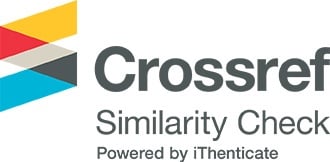Đánh giá hoạt tính kháng khuẩn, kháng nấm của cao chiết quả Khổ qua rừng (Momordica charantia L. Var. Abbreviata ser.) thu hái ở tỉnh Bến Tre, Việt Nam
Các tác giả
DOI: https://doi.org/10.59294/HIUJS.26.2023.525Từ khóa:
Khổ qua rừng, hàm lượng phenolic, kháng khuẩn, kháng nấmTóm tắt
Khổ qua rừng (Momordica charantia var. abbreviata Ser.) là một nguồn giàu thành phần hoạt tính với nhiều chất chuyển hóa thứ cấp của flavonoid, alkaloid, saponin và steroid có hoạt tính kháng vi sinh vật. Nghiên cứu sử dụng chiết xuất hỗ trợ siêu âm như là một phương pháp chiết xuất xanh để tăng cường trích ly các hợp chất phenolic từ quả Khổ qua rừng. Kết quả cho thấy các cao chiết từ hai phương pháp thử nghiệm sử dụng dung môi methanol và ethanol với hỗ trợ của siêu âm đã cải thiện đáng kể hiệu suất chiết, hàm lượng phenolic tổng và hoạt tính kháng vi sinh vật so với phương pháp thông thường. Ngoài ra, các cao chiết này thể hiện hoạt tính kháng khuẩn và kháng nấm tốt chống lại 5 chủng vi khuẩn và 2 chủng nấm thử nghiệm với MIC = 64-256 µg/mL, đặc biệt là thể hiện tác dụng mạnh nhất trên hai chủng vi khuẩn gram âm Escherichia coli và Pseudomonas aeruginosa với MIC lần lượt là và 128-256 và 64 µg/mL. Hơn nữa, cao chiết methanol của quả chưa chín sử dụng phương pháp hỗ trợ siêu âm (U-M-MeOH) đã thể hiện hàm lượng phenolic tổng cao nhất cũng như thể hiện hoạt tính kháng khuẩn và kháng nấm tốt nhất. Đây là cao chiết tiềm năng cho phát triển thuốc từ dược liệu có hoạt tính kháng khuẩn và kháng nấm trong tương lai.
Abstract
Wild bitter melon fruit (Momordica charantia var. abbreviata Ser.) is a rich source of phytochemicals with a variety of secondary metabolites of flavonoids, alkaloids, saponins, and steroids that act as antimicrobial activity. The present study explores the use of ultrasonically assisted extraction as a green extraction methodology to enhance the extraction of phenolic compounds from wild bitter melon fruit. The results indicated that extraction using methanol and ethanol solvents with the ultrasound-assisted method significantly improved the extraction yield, the total phenolic content, and antimicrobial activity compared conventional method. In addition, these extracts showed good antibacterial and antifungal activities against tested five bacterial strains and two fungal strains with MIC = 64-256 µg/mL, specifically also experienced the strongest effects on two gram-negative bacteria Escherichia coli and Pseudomonas aeruginosa with MIC values of 128-256 and 64 µg/mL, respectively. Furthermore, the methanol extract of mature fruit using the ultrasound-assisted method (U-M-MeOH) showed the highest total phenolic content as well as exhibited the best antibacterial and antifungal activities. This is a potential extract for the development of medicinal herbs with antibacterial and antifungal activities in the future.
Tài liệu tham khảo
[1] S. A. R. Naqvi, S. M. A. Shah, L. Kanwal, M. Saeed, Atta-Ul-Haq, J. Nisar, Z. Nisar and M. Akram, “Antimicrobial and antihypercholesterolemic activities of Pulicaria gnaphalodes,” Dose Response, vol. 18, no. 1, p. 1559325820904858, 2020.
DOI: https://doi.org/10.1177/1559325820904858[2] O'Neill, “Tackling drug-resistant infections globally: final report and recommendations,” The review on antimicrobial resistance, London: AMR, 2016.
[3] S. Jia, M. Shen, F. Zhang and J. Xie, “Recent Advances in Momordica charantia: Functional components and biological activities,” Int J Mol Sci., vol 18, p. 2555, 2017.
DOI: https://doi.org/10.3390/ijms18122555[4] F. Krazt, I. A. Müller, C. Ryppa and A. Warnecke, “Prodrug strategies in anticancer chemotherapy,” Chem Med Chem., vol 3, pp. 20-53, 2008.
DOI: https://doi.org/10.1002/cmdc.200700159[5] R. Kaur, K. Kapoor and H. Kaur, “Plants as a source of anticancer agents,” J Nat Prod Plant Resour., vol 1, pp. 119-124, 2011.
[6] S. A. R. Naqvi, S. Ali, T.A. Sherazi, A. Haq, M. Saeed, M. Sulman, M. Rizwan, S. Alkahtani and M. M. Abdel-Daim, “Antioxidant, antibacterial, and anticancer activities of bitter gourd fruit extracts at three different cultivation stages,” Journal of Chemistry, vol. 2020, pp. 1-10, 2020.
DOI: https://doi.org/10.1155/2020/7394751[7] Trần Hùng, Giáo trình Phương pháp nghiên cứu dược liệu, Bộ môn Dược liệu - Khoa Dược: Trường Đại học Y Dược TP. Hồ Chí Minh, tr. 25-49, 2014.
[8] K. Slinkard and V. L. Singleton, “Total phenol analysis: automation and comparison with manual methods,” American Journal of Enology and Viticulture, vol. 28, no. 1, pp. 49-55, 1977.
DOI: https://doi.org/10.5344/ajev.1974.28.1.49[9] P. R. Murray, E. J. Baron, M. A. Pfaller, F. C. Tenover and R. H. Yolke, Manual of clinical microbiology, 6th ed., ASM Press, Washington, 1995.
[10] P. C. Em, L. T. Tuong Vi and T. N. Tuyen, “Design, synthesis, bio-evaluation, and in silico studies of some N-substituted 6-(chloro/nitro)-1H-benzimidazole derivatives as antimicrobial and anticancer agents,” RSC Adv., vol. 12, pp. 21621-21646, 2022. DOI: 10.1039/d2ra03491c.
DOI: https://doi.org/10.1039/D2RA03491C[11] Nguyễn Thị Hồng Yến và Nguyễn Viết Khẩn, “Xác định hàm lượng charantin, hoạt tính chống oxy hóa và kháng khuẩn in-vitro của quả mướp đắng (Momordica charantia) ở Thừa Thiên Huế,” Tạp chí Y Dược học - Trường Đại học Y Dược Huế, số 21, tr. 99-104, 2014.
[12] N.D.H. Cheong, L.A. Zakaria and H. Yusof, “Qualitative phytochemical screening and antibacterial properties of Momordica charantia methanolic extract against selected bacterial strains,” Mal J Med Health Sci., vol. 18, pp. 154-161, 2022.
DOI: https://doi.org/10.47836/mjmhs.18.s15.21[13] D.A.C. Rasmi, L. Zulkifli and N. Ahadia, “Antimicrobial activity test of bitter melon (Momordica charantia L.) plant extract against Staphylococcus epidermidis, Escherichia coli bacteria and Candida albicans,” Jurnal Penelitian Pendidikan IPA, vol. 9, no. 2, pp. 454-458, 2023.
DOI: https://doi.org/10.29303/jppipa.v9i2.3699Tải xuống
Tải xuống: 605











